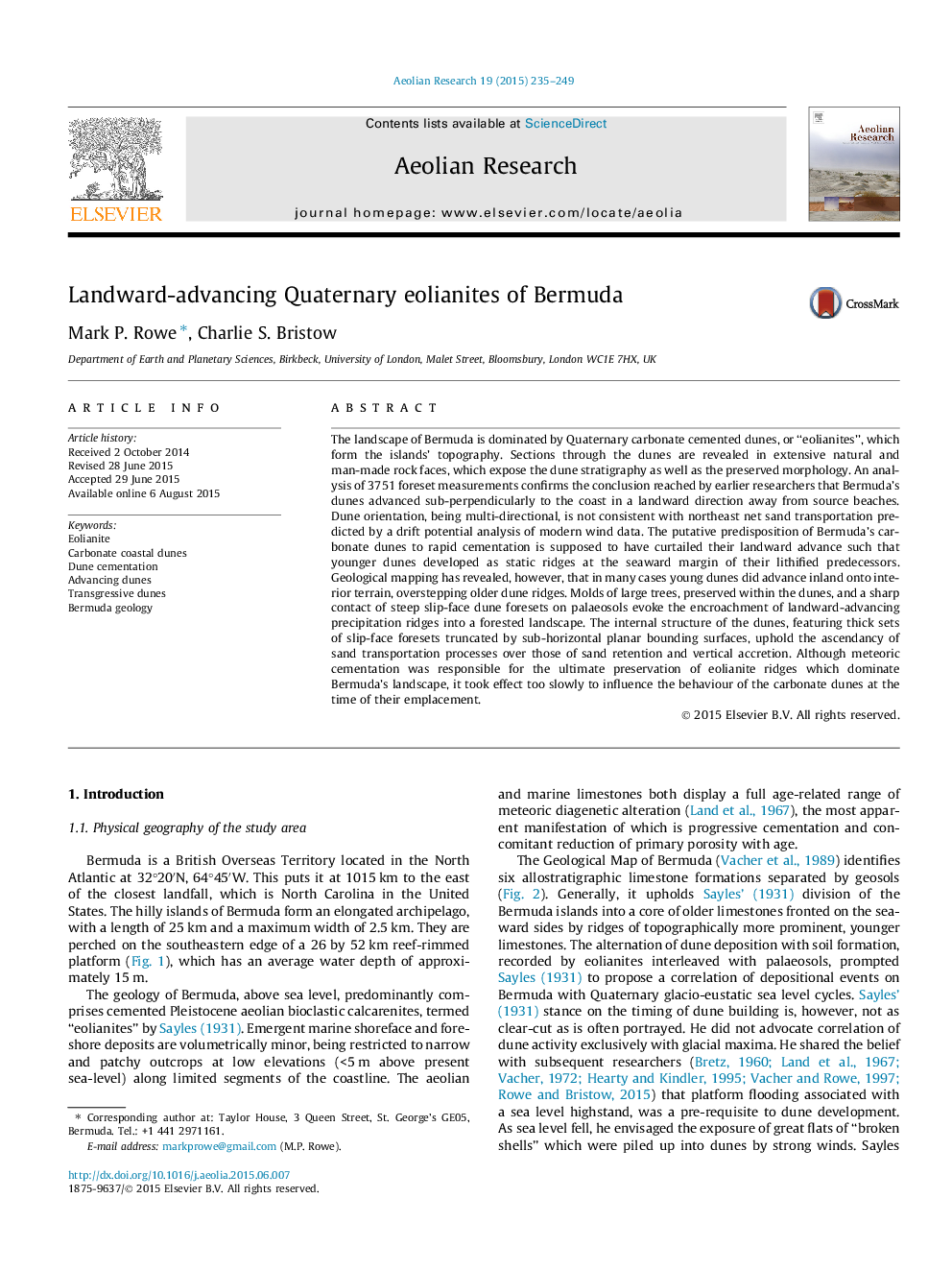| کد مقاله | کد نشریه | سال انتشار | مقاله انگلیسی | نسخه تمام متن |
|---|---|---|---|---|
| 4673787 | 1346955 | 2015 | 15 صفحه PDF | دانلود رایگان |

• We investigate the orientation and internal structure of Bermuda’s Pleistocene eolianites.
• Slip-face dip azimuths do not align with the present-day resultant drift direction.
• Dunes advanced landward away from source beaches.
• Carbonate cementation was not sufficiently rapid to influence dune emplacement.
• Mobile advancing dunes encroached onto interior terrain and entombed standing trees.
The landscape of Bermuda is dominated by Quaternary carbonate cemented dunes, or “eolianites”, which form the islands’ topography. Sections through the dunes are revealed in extensive natural and man-made rock faces, which expose the dune stratigraphy as well as the preserved morphology. An analysis of 3751 foreset measurements confirms the conclusion reached by earlier researchers that Bermuda’s dunes advanced sub-perpendicularly to the coast in a landward direction away from source beaches. Dune orientation, being multi-directional, is not consistent with northeast net sand transportation predicted by a drift potential analysis of modern wind data. The putative predisposition of Bermuda’s carbonate dunes to rapid cementation is supposed to have curtailed their landward advance such that younger dunes developed as static ridges at the seaward margin of their lithified predecessors. Geological mapping has revealed, however, that in many cases young dunes did advance inland onto interior terrain, overstepping older dune ridges. Molds of large trees, preserved within the dunes, and a sharp contact of steep slip-face dune foresets on palaeosols evoke the encroachment of landward-advancing precipitation ridges into a forested landscape. The internal structure of the dunes, featuring thick sets of slip-face foresets truncated by sub-horizontal planar bounding surfaces, uphold the ascendancy of sand transportation processes over those of sand retention and vertical accretion. Although meteoric cementation was responsible for the ultimate preservation of eolianite ridges which dominate Bermuda’s landscape, it took effect too slowly to influence the behaviour of the carbonate dunes at the time of their emplacement.
Journal: Aeolian Research - Volume 19, Part B, December 2015, Pages 235–249